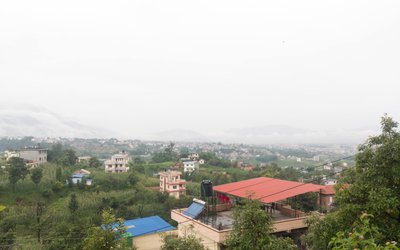
The seventy-three pages accident investigation report on Yeti's ATR/9N-ANC Pokhara crash has just been released. The first-ever procedures for air accident investigations were laid down in 1928 in the USA. These procedures required investigations to consider the immediate and underlying factors of the accident to establish and apportion blame for its occurrence. However, the focus on assigning blame during investigations was later abandoned around 1946/47. Instead, the Accident Investigation Division of ICAO developed standards and recommended practices, which later became Annex 13 of the Chicago Convention.
Finding the causes of accidents, big and small, and the resulting safety recommendations, was thought to help prevent such events from re-occurring. It was assumed that all stakeholders namely, pilots, aircraft manufacturers and regulatory agencies benefited by learning from their or other’s mistakes. The big question is, have these been of any use at all, here? With accidents number not declining, and Pokhara crash, sadly, has set new high in number of fatalities for a domestic crash. One wonders if our establishment treats crash investigation just as a “mandated nuisance”. Now that the accident investigation committee is through with the entrusted job, this piece attempts to pose questions from a different angle altogether. Let me hasten to add that, this scribe is neither qualified nor intends to demean their work in any way.
The core report, actually consist of 62 pages (pg11-73) and 59% of the report is attributed to “Factual Information “that sets the background. The “Analysis “section takes about 17%.Of the remaining, we get three pages of - very sharp -“Findings”, two pages of rather blunt “Safety Recommendations”. But it is an irony that the report ends stating “Safety Actions”, claimed to have been initiated by stakeholders, sadly after the horses had escaped.
As for the “findings”, the first seven just state facts, the critical ones run from #8-18. But I find the one listed under #12 showing concerns raised by one of the domestic airline planning to operate to new airport at Pokhara (PHR) had identified lack of published data on the airport AIP as a hazard of high risk category, to create the unsafe event crew confusion and disorientation and ultimately the possible outcome of as CFIT. Hats off to the unnamed Nepali private operator which foresaw it happening, while our “very capable” CAAN did not. That beside, when seen in conjunction with findings #8,9,10 and 11, it shows that the laissez-faire manner in which the matter related to aviation safety is taken by the “high profile” organization entrusted to look after aviation safety here. And with all this happening right under its nose, we are made to believe that it is doing its “level best” to address EASA’s safety concerns. It is truly a “knockout punch” delivered on CAAN, against its regular but hollow bravado to create a false “make believe” environment all around about our aviation safety. No wonder our Neros were playing the “legendary flute”, unconcerned, while the Seti gorge was on fire.
The finding is no less devastating for the operator of the flight as well. It states that the training was insufficient, to say the least, while the crews are seen to be “complacent” for not performing checklist and cross checks as required as listed under #14-18. The Pilot Monitoring (PM), or real Captain of the flight, literally, sealed the fate of all on board by inadvertently feathering the propellers at the most critical juncture when the ATR was required to make a sharp turn. While the propellers kept rotating, they were not biting as much air to produce required forward thrust. It is said, when leaders get too comfortable with a high level of performance, they lose the edge to sustain it. This overconfidence / feeling of security can lead to massive failure. The blunt message is “Complacency kills” proving what followed at Pokhara on 15 January 2023.
Thinking out of the box, I always wondered what was so special about the left cockpit seat that the Captains always sat there. Understand, this tendency came about due to the nature of early rotary-driven aircraft, particularly fighter aircraft of WW1 days. It was easier for those aircraft to turn left as this allowed them to follow the torque of their engines. But the right turns were difficult as it required pilots to exert more force and rudder to do the opposite. If they can switch roles (PF/PM) in flight, why can’t they interchange seats? I am saying this only because, if PM in the ill-fated flight had occasional experience of seating on the right as well, he might not have mistaken the propeller feathering lever with flap leavers even if the two levers could be easily differentiated by mere touch.
It was a very devastating outcome of an event that should not have happened, in the first place. On the other side, this exemplifies massive failures at all fronts and top to bottom, in our aviation sector. Not blaming individuals is fine, but why should the establishment get that benefit? B737 MAX’s episode is still raw in our memory; was Boeing not lying right through that there was nothing wrong with the plane? Think it will be right to name and blame establishment, if found to be severely negligent on their responsibilities.
Though it may sound extremely bitter, it looks quite probable that we will be stuck deep in the “black list” for decades to come. That is, unless our organizations and government works to make “honest” improvements all around. The government could start the ball rolling by establishing a permanent investigation entity with sufficient financial, human and technical resources to meet the international obligation as per Annex 13 of the Chicago convention as suggest in the report along with various other recommendations.
Hemant Arjyal can be reached at harjyal@yahoo.com
- Tailwind Or No Tailwind
- Mar 18, 2024
- Kabadi’s Bi-cycle
- Aug 31, 2023
- Long Wait To Catch Something, Someday
- Aug 23, 2023
- Putting Foot Down
- May 13, 2023
- Coughing Engine And Arrogant Ways
- May 04, 2023

















